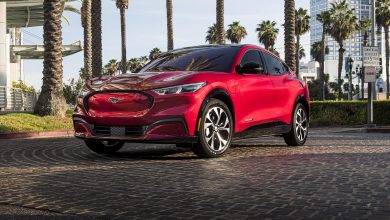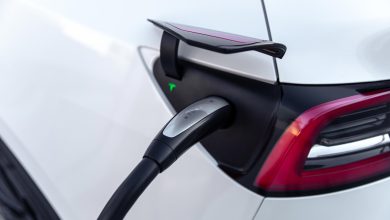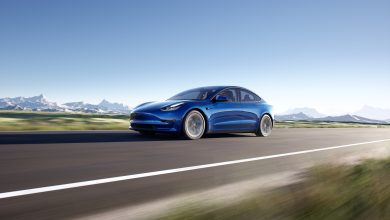Five Reasons Why Many Are Switching To Electric Vehicles
EV NewsEV registrations increased 60 percent in the first quarter of 2022

The first crude electric vehicle was developed by Robert Anderson around 1832. However, it took over 40 decades (the 1870s) for the idea to become practical. Even when it finally became possible, a lot of setbacks limited its commercialization.
Fast-forward to 1996, General Motors unveiled the first modern, mass-produced electric vehicle called the EV1. Since then, more manufacturers have started experimenting with electric vehicles. In June 2022, EU lawmakers agreed to ban new fossil-fuel cars starting from 2035.
This announcement has sparked a massive rush by automakers to fast-track their production line to all-electric. The recent Russia-Ukraine conflict has sent gas prices soaring above the ceiling and provided the incentive for some to consider switching to electric.
No doubt, the future of vehicles is electric. While much of the emphasis on EVs has been to reduce emissions to help fight global warming, not everyone believes that global warming is real—even when the impacts are glaring.
It will surprise you to know that the majority of those switching to EVs are doing so not because they care about the climate but for the short and long-term personal gains that come with driving an EV. If you have been sitting on the fence, check out the reasons why everyone is switching to electric—and it may sway your decisions too.
1. Electric vehicles are cheaper to run and maintain
Electric vehicles come with fewer parts which also means a smaller number of parts to worry about. For example, the absence of a combustion engine means no need to change oil, spark plugs, fuel filters, transmission fluid, drive belts, or carry out other regular daily maintenance as you would do with an internal combustion engine (ICE).
Instead of radiators, some electric vehicles use air cooling systems for the battery, motor, and converters. If you get one of the EVs that makes use of an air cooling system, you also don’t have to check the water level in the radiator every morning. It is estimated that the average saving on repair and maintenance costs of EVs during their lifetime is $4,600 more than gas-powered vehicles.
The cheaper maintenance cost of EVs is not limited to the things you don’t have to do daily. It is estimated that a fully charged electric vehicle will travel farther than its gas-powered equivalent would do on a full tank. This allows EV drivers to save over $1,000 annually on fuel.
Drivers of ICE are affected by volatile prices at the pumps. The rising global price of gas has been one of the challenges that ICE vehicle drivers have had to contend with. On the other hand, the price that EV drivers have had to pay to charge their EVs has been fairly stable through the turmoil because some of the charging stations are powered by renewable energy sources.
As automobiles age, they tend to require more maintenance because of the wear of moving parts. While the initial cost of EV may be higher than ICE, they pay for this cost over time with cheaper maintenance costs. EV batteries have a lifespan of 15 to 20 years which helps to pay for their huge initial cost.
2. Quiet and better driving experience
Preferences differ among drivers. While some drivers love the revving of the engine, others prefer a quiet driving experience. A luxury brand like Rolls-Royce has made a fortune selling cars that guarantee this silent driving experience.
With electric vehicles, it has become easier for manufacturers to achieve this quiet driving experience. The only noise that you will likely experience when you drive an EV is a faint whir that can easily be killed off by the robust infotainment systems that come with most electric vehicles.
Instead of quiet driving, the challenge that some brands are having now is satisfying clients that love the revving of the V8 engines. Certain automakers are now working on ways to bring back that sound in their EV models. Also, some manufacturers are adding sound generators so that pedestrians and other road users will be aware of EV presence.
Since the batteries are mounted low in the car and the electric motor takes up smaller space, EV drivers usually have more space for their luggage. Consequently, families will have a better road trip experience with EVs than with most ICE vehicles.
Another area that EVs dwarf ICEs is their ability to generate instant torque which provides better acceleration and deceleration response. The low mounting of the batteries gives EVs a low center of gravity. Therefore, EV drivers can expect better handling and responsiveness.
3. Charging flexibility
During the early days of EVs, one of the biggest challenges that users faced was where to charge their EVs when they run out of power. However, with the growing adoption of electric vehicles, more charging stations are popping up across the United States.
Companies like ChargePoint and EVgo are expanding EV charging infrastructure in the United States. In October 2022, it was announced that Tesla was making plans to open its charging stations to non-Tesla drivers. The initiative would begin in Europe and spread out, although it was not clear if it will get to the United States and when.
Apart from the expanding charging infrastructures, it is actually possible to install an EV charger in your garage. This allows you to plug in your EV at night and wake up to a fully charged battery. That is not the case with gas-powered vehicles. You still have to drive to a fueling station to refill your tank.
Those that install EV chargers at home will not have to queue at the gas stations as ICE drivers do. Such queues often stretch a long distance when there is a shortage. Although not a frequent sight in America, in some other countries, it is a big deal.
Interestingly, newer EVs often come with fast-charging capability which allows you to charge from 10% or 20% to 80% in less than 20 minutes. While it will take longer to get a full charge, it is recommended that you don’t charge your battery beyond 80% to extend its lifespan—except if you want to travel a long distance.
While range anxiety is still a major concern with EV skeptics, it is bad to leave your battery sitting at 100%. With advancing battery technology, range anxiety may also be a thing of the past. Newer EVs continue to surprise us with how far they can go on a full charge.
4. Possibility of tax credits, rebates, and perks
Most EVs made in the United States meet the requirements for federal tax credits to the tune of $7,500. Some states and cities offer extra financial incentives. The Department of Energy has released a list of all the tax incentives, rebates, and programs offered by different states. A few of those making the switch to EVs do so to get their share of the federal and state incentives.
Apart from the financial benefits, EV drivers often enjoy other perks like reserved parking spots, free or reduced tolls, free metered parking, and access to restricted highway lanes. Some schools have installed charging stations for electric vehicles. All these perks improve the driving experience for EV drivers.
5. Improving guarantee of EV safety
Like every new product, when EVs started getting mass-produced, one of the anxieties holding people back from making the switch was the question, “How safe are they?” However, as EVs started becoming more mainstream, more people saw that they were safe.
Now, research has shown that EVs are just as safe as gasoline- or diesel-powered vehicles—or even safer. The chief of the Insurance Institute for Highway Safety (IIHS) said “transitioning the United States fleet to EVs doesn’t need any safety compromise.”
In recognition of the safety of EVs, Volvo XC40 Recharge, Volkswagen ID.4, and Audi e-Tron received the 2022 IIHS Top Safety Pick awards. Drivers that once worried about the safety of EVs don’t have to fret anymore.
Conclusion
During the COVID-19 lockdowns of 2020, many cities saw improved air quality because they were fewer cars on the road. There are reports that the transportation sector in the United States accounts for 27% of greenhouse gas emissions. The majority of those emissions are from passenger vehicles.
Bad air quality doesn’t only affect the climate but also affects people’s health. Poor air quality is one of the leading causes of respiratory illnesses. So, even if you don’t believe in climate change, driving an ICE vehicle can put you at a greater risk of respiratory infection.
Perhaps, there is a gasoline-powered car that you love and can’t ditch because of the experience or memories behind it. It should interest you to know that you can convert your ICE cars to EVs. More companies that convert ICE to EVs are popping up around the United States—and finding one shouldn’t be a serious challenge.




